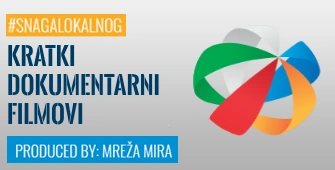Fundraising represents a wide range of activities that includes the collection of funds, donations of goods and/or services, support through volunteering, sharing contacts and connecting with others, as well as regular reporting and work with the community.
Every non-profit organization should implement community fundraising into their work for several reasons:
- a larger community of supporters,
- greater legitimacy in communities,
- good PR,
- increased social influence.
You will also be able to react quickly in emergency situations and quickly get community support.
When we raise funds from the community, we focus on building connections with all important groups and individuals in the community and plan our communications and activities accordingly.
Effective community fundraising requires effective communication and developed outreach strategies, as well as a deep understanding of the local community and its values and priorities.
Community fundraising models rely on the active participation of donors, volunteers and community members and often include events and activities that engage and mobilize the community.
Community fundraising models are designed to harness the collective power of people to address important social issues and challenges.
Nonprofit organizations can use a number of effective community fundraising models to gain support for their work. Each model brings with it different advantages and challenges, and nonprofits should choose the model that best suits their goals, resources, and community.
In this blog, we present to you some of the most effective community fundraising models that can help your organization get support for your mission and specific activities.
Donation model
The donation model implies cash payments to the organization’s account or through an online donation on the organization’s website. This fundraising model is well known to everyone – both organizations and citizens, and enables one-time support for the organization.
The implementation of electronic payment on your organization’s website requires a little more resources at the very beginning, but it allows the organization to make the first contact with all supporters and immediately thank them for the donation. The possibility of online donations on the site is also significant because of the collection of contacts, which makes it easier for fundraisers to nurture and deepen relationships with supporters.
Through the donation model, the supporters’ first contact with the organization is very often achieved. Therefore, it is very important that you clearly communicate the call to action, the outcome of the donation both on the site and in other materials you use. Also, it’s important to point out how backers can get in touch with your team if they have additional questions or concerns.
Donation boxes
Donation boxes are a fundraising model that allows the widest community to provide one-time support to the organization and its work. We most often see them in locations where a lot of people pass by, such as stores, pharmacies, shopping centers or the post office, and you’ve probably noticed that they are most often located next to the cash register or the entrance.
The reason for this is simple: people decide to donate more easily and quickly if the donation box is close to the place where they already buy or pay for something. If they see a clearly marked donation box, they will be more than happy to drop in change if it clearly and precisely communicates what it is intended for and what its outcome is.
That is why it is important to pay attention to the design of the donation boxes so that they attract the attention of passers-by through the photo, visual and/or color combination. In addition to the purpose for which the money is collected, it is necessary to put the name of the organization, website and contact information. Of course, this is important not only for fundraising but also for promoting your organization in the community, especially if you provide services.
It is absolutely necessary to obtain the consent of the owner or user of business and public space for the installation of donation boxes. The rights and obligations of both parties are regulated by an appropriate contract, which also includes reporting to the organization on how it spent the collected funds.
In the region, local Red Cross offices have set up boxes in chain stores, malls and post offices to collect funds for their programs and beneficiaries.
At most airports in the region, you can find donation boxes precisely because of the greater number and flow of people.
Donation boxes can be set up for a limited period of time within companies. With their donation, employees can support the work of the organization, and the company often undertakes to double the amount of funds collected. This gives the company the opportunity to organize a charity activity for its employees with an element of gamification.
Crowdfunding (Group or joint financing)
Crowdfunding is another popular model of fundraising in communities, which involves collecting donations from a large number of people, usually via an online platform.
Crowdfunding campaigns are focused on specific projects or actions with clear goals and can effectively engage a wide range of supporters. These campaigns are limited in time and usually last between 30 and 45 days.
Of course, collecting donations is not the only goal of crowdfunding. In addition to securing funds for your new projects, you can test your community, increase the number of supporters, connect with new donors and raise the visibility of the organization and awareness of its work.

Fundraising Model Canvas
The above mentioned three models of fundraising in the community are not the only ones. In the rest of the blog, learn more about how to choose the right fundraising model for your organization.
As a fundraiser or professional working in a non-profit organization, you are probably familiar with the traditional concept of the Business Model Canvas , which helps companies map out the key elements of their business strategy. But have you ever heard of the Fundraising Model Canvas ? This tool was created specifically for nonprofits and can help you determine the key elements of your fundraising strategy.
The Fundraising Model Canvas is primarily a visual tool that shows the elements of a fundraising strategy.
With the help of the Fundraising Model Canvas , you can succinctly present the logic and structure within your organization, gain a clear insight into why and how certain activities are carried out, and develop your appropriate fundraising model.
It’s divided into nine sections, each representing a specific aspect of your fundraising approach. By completing each section, you can create a comprehensive overview of your fundraising strategy and identify areas for improvement.
Here’s a quick overview of the nine sections that make up the Fundraising Model Canvas :
- Unique Value – This section defines the unique value your nonprofit provides to its community. What sets your organization apart from others and why should people choose to support your cause?
- Community – This section addresses the different types of donors and supporters your nonprofit is reaching out to. This may include individual donors, corporate donors, foundations or other supporters.
- Channels – This section describes the different channels your nonprofit uses to reach donors and supporters. This may include email marketing, social media, direct mail, events or other communication channels.
- Activities – in this section you list the specific activities that you carry out in the fundraising process.
- Resources – This section identifies your nonprofit’s key resources, which may include employees, volunteers, technology, or other resources.
- Partners – in this section you list the key partners and stakeholders with whom your non-profit organization cooperates. This may include members of the board of directors, volunteers, partner organizations or other groups.
- Revenue – This section describes the different ways your nonprofit gains support and raises funds for its activities. This may include donations, grants, sponsorships or other sources of funding.
- Cost structure – this block identifies the costs associated with your fundraising campaign activities. This may include employee salaries, marketing costs or other costs.
- Impact – This section describes your nonprofit’s impact on its communities, as well as the relationships you foster and establish with it.
Using the Fundraising Model Canvas can help you create a fundraising strategy tailored to your nonprofit and identify areas for improvement. Whether you’re an experienced fundraiser or just starting out, this tool can help you create a more efficient and effective fundraising plan.
We will help you further by publishing another blog soon – about advanced fundraising models, with tips on how to apply them in your organization’s work.
Source: givingbalkans.org
Source: lonac.pro





